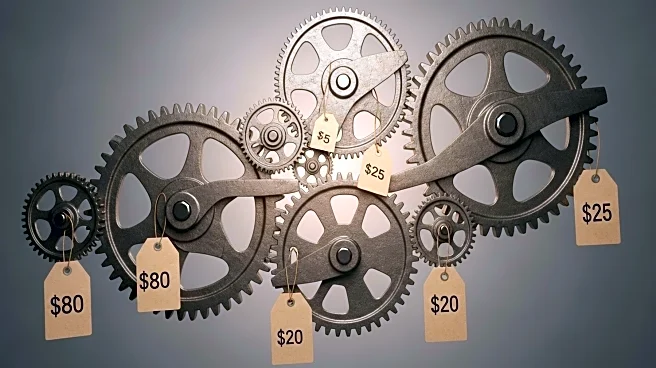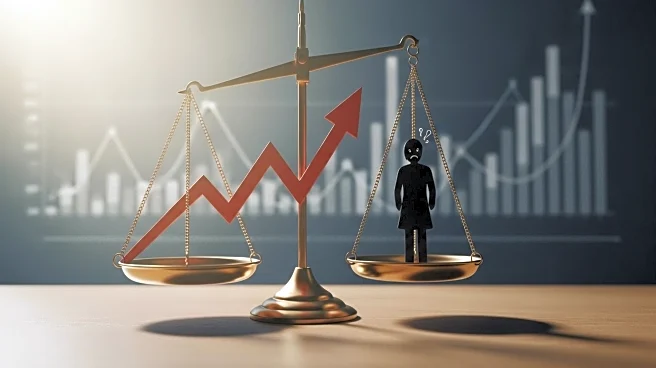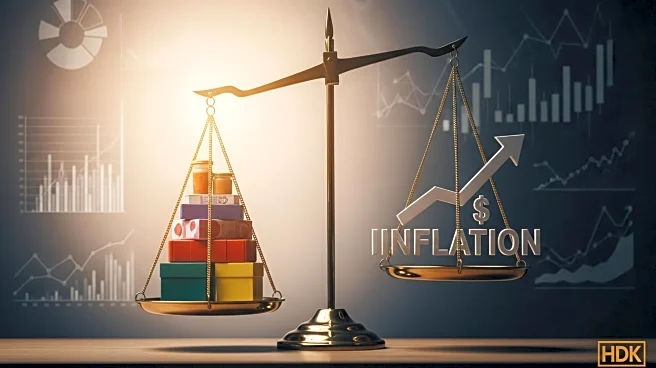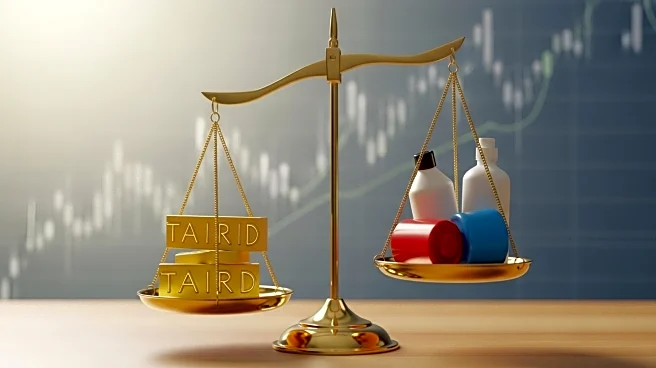What's Happening?
Since President Trump announced new import tariffs in April, inflation has increased, particularly in tariff-sensitive categories such as coffee, toys, and televisions. The consumer price index shows a 2.9% rise in overall prices in August compared to the previous year. The tariffs have led to an average tariff rate of 17.4%, the highest since 1935, costing households an estimated extra $2,300 in 2025. The Federal Reserve Bank of San Francisco notes that tariffs have a significant impact on prices, affecting various sectors from food to manufacturing.
Why It's Important?
The tariffs have contributed to inflationary pressures, affecting everyday household spending and moving inflation further from the Federal Reserve's target. This situation highlights the broader economic impact of trade policies on consumer prices and market stability. As tariffs increase costs for imported goods, businesses may pass these costs onto consumers, leading to higher prices and reduced purchasing power. The ongoing court challenge to these tariffs adds uncertainty to the economic landscape, potentially influencing future trade policy decisions.
What's Next?
The court challenge to the tariffs remains pending, and its outcome could affect future tariff policies and economic conditions. If the tariffs are overturned, there may be adjustments in pricing and supply chain dynamics. Businesses and consumers will need to adapt to potential changes in import costs and market conditions. The Federal Reserve may also need to consider these inflationary pressures in its monetary policy decisions.











